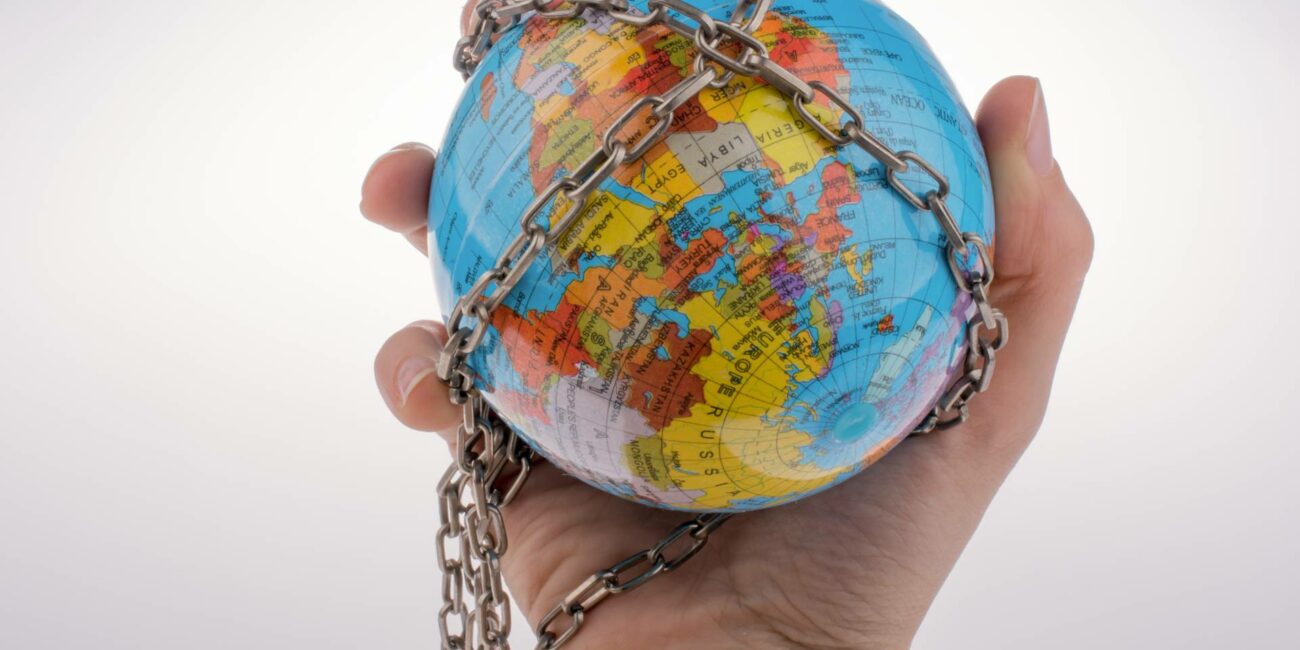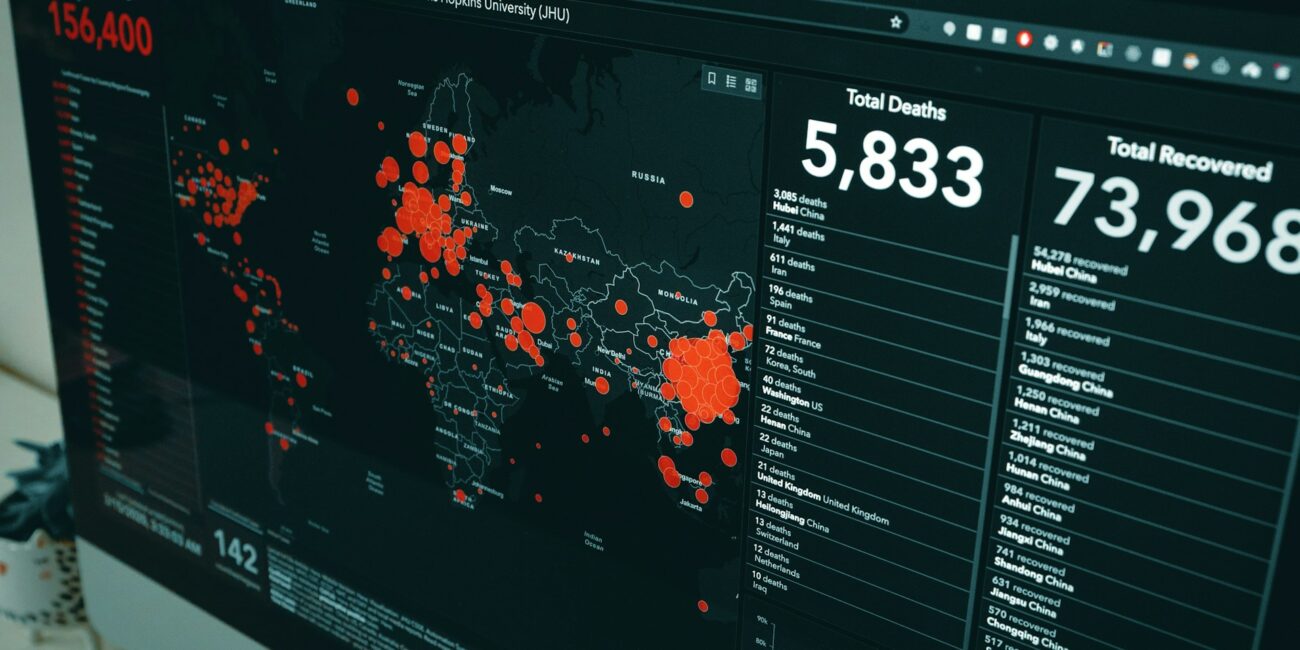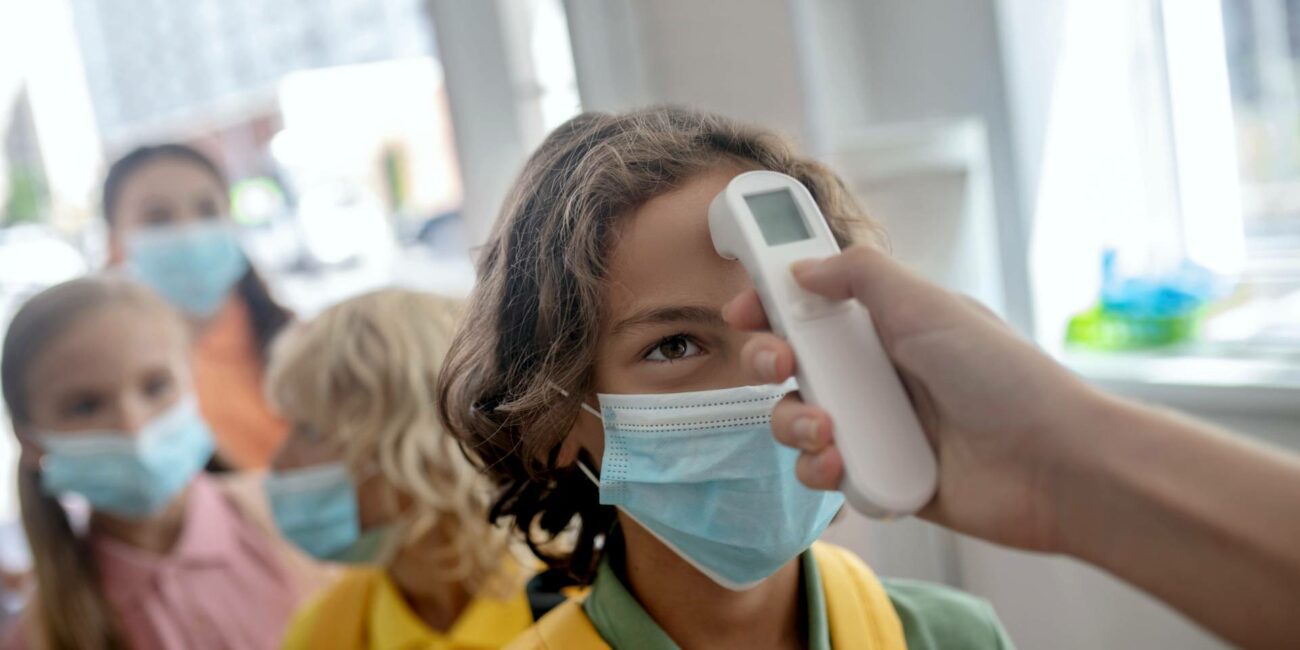by Dr David Bell
The World Health Organization (WHO) is currently developing two international legal instruments intended to increase its authority in managing health emergencies, including pandemics:
-
- Amendments to the 2005 International Health Regulations (IHR), and
- A pandemic treaty, termed ‘CA+’ by WHO.
The draft IHR amendments would lay out new powers for WHO during health emergencies, and broaden the context within which they can be used. The draft CA+ (‘treaty’) is intended to support the bureaucracy, financing and governance to underpin the expanded IHR.
These proposed instruments, as currently drafted, would fundamentally change the relationship between the WHO, its Member States, and naturally their populations, promoting a fascist and neo-colonialist approach to healthcare and governance. The documents need to be viewed together, and in the far wider context of the global/globalist pandemic preparedness agenda.
Context
The threat of pandemics
The current rapidly increasing funding for pandemics and health emergencies is based on several fallacies, frequently repeated in white papers and other documents, as well as in the mainstream media, as if they were facts; in particular:
-
- Pandemics are increasing in frequency.
- Pandemics are causing an increasing health burden.
- Increased contact between humans and wildlife will promote more pandemics, as most are caused by zoonotic viruses.
The last pandemic to cause major mortality was the 1918-19 ’Spanish Flu’, estimated to have killed between 20 and 50 million people. As noted by the National Institutes of Health, most of these people died of secondary bacterial pneumonia, as the outbreak occurred in the pre-antibiotic era. Prior to this time, major pandemics were due to bubonic plague, cholera and typhus, all addressable with modern antibiotics and hygiene, and smallpox, which is now eliminated.
WHO lists just three pandemics in the past century, prior to Covid-19: the influenza outbreaks of 1957-58 and 1968-69, and the 2009 Swine Flu outbreak. The former killed 1.1 million and 1 million people respectively, while the latter killed 150,000 or fewer. For context, 290,000 to 650,000 people die of influenza every year, and 1.6 million people die of tuberculosis, at a much younger average age.
In Western countries, Covid-19 was associated with deaths at an average age of about 80 years, and global estimates suggest an overall infection mortality rate of about 0.15%, which is similar to that for influenza.
Thus, pandemics in the past century have killed far fewer people, and at an older age, than most other major infectious diseases.
The Covid-19 event stands out from previous pandemics due to the aggressive and disproportionate responses employed, which were instituted contrary to existing WHO guidelines. The harms of this response have been discussed extensively elsewhere. There is little doubt that the resultant disruptions to health systems and increased poverty will cause far higher mortality, at a far younger age, than would have been expected from Covid-19 itself. Despite the historical rarity of pandemics, WHO and partners are pushing forward with a rapid process that will ensure the repetition of such responses, rather than first analysing the costs and benefits of the recent pandemic response. This is clearly reckless and a bad way to develop policy.
The role of WHO in public health
While WHO’s Constitution includes a role in coordinating cross-border health emergencies, the organisation was founded on principles of human rights and originally emphasised community and individual rights. These culminated in the Declaration of Alma Ata, emphasising the importance of community participation and ‘horizontal’ approaches to care.
Apart from its foundation in human rights, this approach has a strong public health basis. Improved life expectancy and major reductions in infectious diseases in wealthier populations predominantly occurred through improved living conditions, nutrition and sanitation, with a secondary impact of improving basic health care, and availability of and access to antibiotics. Most vaccines came later, playing an important role in certain diseases such as smallpox. Basic nutrition and living conditions are still the predominant determinant of life expectancy, with GDP recognised as directly impacting infant mortality, particularly in lower income countries.
The emphasis of WHO has changed over the past few decades in particular, associated with two major shifts in funding. Firstly, a large proportion of funding now comes from private and corporate sources, rather than being almost solely country-based, as was the case at its inception. Secondly, most funding is now ‘specified’, meaning that it is given to WHO for specific projects in designated geographies, rather than being used at WHO’s discretion to address the greatest disease burdens. This is reflected in an apparent move from priorities based on disease burden to priorities based on commodities, particularly vaccines, that generate profit for its private and corporate sponsors.
In parallel, other ‘public-private partnerships’ have arisen, including Gavi, the vaccine alliance, and CEPI, dedicated solely to pandemics. These organisations include private interests on their governing boards, and address a narrow health focus that reflects the priorities of private sponsors. They influence WHO through direct funding and through funding within WHO Member States.
Other UN agencies have evolved in similar ways, with UNICEF now heavily focused on implementing mass Covid vaccination among populations that are already immune, whilst children, its former focus, have had rapidly deteriorating health metrics. The World Bank, with WHO as technical partner, has developed a Financial Intermediary Fund (FIF) to support pandemic preparedness through funding the development of a surveillance, identification and response network, as envisioned in the two WHO pandemic instruments (below) and backed by the recent G20 meeting in Indonesia.
The WHO pandemic instruments
WHO is pushing two instruments to enhance its role and authority in health emergencies including pandemics: (1) Amendments to the International Health Regulations (2005) (IHR), and (2) a new treaty-like instrument currently designated CA+.
The IHR (2005) currently has force under international law but is written as non-binding recommendations. The World Health Assembly (WHA), the governing body of WHO, will need only a simple majority of States (97 of 194) to pass the amendments. Countries will then have six months in which to opt out, otherwise they will be considered to have accepted the amendments as existing signatories to the IHR. This opt-out period was reduced from 18 months by the WHA in 2022.
The IHR amendments and the CA+ (treaty) instrument are due to be presented to the WHA in May 2024. Adoption of the CA+ will require a two-thirds majority of Member States, and the IHR amendments will require a simple majority.
Both draft instruments are currently passing through a usual WHO process of open and closed committee meetings and internal and external reviews, after submission of proposals by various States. The IHR amendments process is under the Working Group on Amendments to the International Health Regulations (2005) (WGIHR) while the CA+ instrument is under the International Governmental Negotiating Body (INB).
What the two WHO pandemic instruments will do
As currently drafted, the CA+ and IHR amendments complement each other. The IHR amendments concentrate on the specific powers and processes sought by WHO and its sponsors. The CA+ concentrates more on the governance and funding to support these. Specificities in both instruments will change between now and the WHA vote on them in May 2024. However, in broad terms, they are currently written to achieve the following:
1. IHR draft Amendments:
-
- Expand the definitions of pandemics and health emergencies, including the introduction of ‘potential’ for harm rather than actual harm. It also expands the definition of health products that fall under this to include any commodity or process that may impact on the response or “improve quality of life”.
- Change the recommendations of the IHR from ‘non-binding’ to mandatory instructions that the States undertake to follow and implement.
- Solidify the Director General’s (DG’s) ability to independently declare emergencies.
- Set up an extensive surveillance process in all States, which WHO will verify regularly through a country review mechanism.
- Enable WHO to share country data without consent.
- Give WHO control over certain country resources, including requirements for financial contributions, and provision of intellectual property and know-how (within the broad definition of health products above).
- Ensure national support for promotion of censorship activities by WHO to prevent contrary approaches and concerns from being freely disseminated.
- Change existing IHR provisions affecting individuals from non-binding to binding, including border closures, travel restrictions, confinement (quarantine), medical examinations and medication of individuals. The latter would encompass requirements for injection with vaccines or other pharmaceuticals.
2. CA+ (treaty):
-
- Set up an international supply network overseen by WHO.
- Fund the structures and processes by requiring ≥5% of national health budgets to be devoted to health emergencies.
- Set up a ‘Governing Body’, under the auspices of WHO, to oversee the whole process.
- Expand scope by emphasising a ‘One Health’ agenda, defined as a recognition that a very broad range of aspects of life and the biosphere can impact health, and therefore fall under the ‘potential’ to spread harm across borders as an international health emergency.
Both draft instruments remain under discussion, and further changes are likely. A recent external review committee report pushed back on some aspects of the IHR amendments in a report to the DG, but left much of the basis intact.
It is important to consider these texts together, and in the context of the wider pandemic preparedness agenda that includes agencies such as Gavi and CEPI, their private and corporate sponsors, and private industry lobby groups including the World Economic Forum (WEF). The WEF has been influential in promoting the agenda; CEPI was inaugurated at the 2017 WEF meeting in Davos . The pandemic agenda must also be seen in the context of the unprecedented profits and wealth transfers, and the suspension of basic human rights, that the Covid-19 public health response promoted.
The momentum behind the agenda
An international bureaucracy is currently being built with funding envisioned of up to $31 billion per year, including $10 billion in new funding (for context, the entire current WHO annual budget is about $3.6 billion.) This same bureaucracy will surveil populations for new and variant viruses, identify them, determine their ‘threat’ level and then implement a response. This essentially creates a self-perpetuating pandemic industry, fraught with major internal conflicts of interest, funded by the world’s taxpayers but, as a UN agency, having no national legal oversight and little accountability. Its justification for continued funding will rely on declaring and responding to perceived threats, restricting the lives of others whilst accruing profit for its sponsors through pharmaceutical recommendations and mandates.
While both texts are intended to have force under international law, countries can theoretically opt out in order to preserve their sovereignty and protect their citizens’ rights. However, low-income countries could potentially face financial pressures, restrictions and sanctions from entities such as the World Bank that are also invested in this agenda. Of relevance, the 2022 United States National Defense Authorization Act (HR 7776-960) includes wording concerning adherence to the IHR, and action concerning countries that are uncooperative with its provisions.
The pandemic agenda must also be seen in the context of the unprecedented profits and wealth transfers, and the suspension of basic human rights, that the Covid-19 public health response promoted.
What can be done?
These initiatives, if continued, will reverse the direction of international public health and the WHO itself, driving back towards a colonialist and fascist approach to health governance that reflects values the world sought to put aside in the aftermath of World War Two. As the Covid-19 response demonstrated, they will have a wide and profound impact across society, removing basic human rights, and increasing poverty and wealth concentration. They deserve global attention and a robust society-wide response.
Both draft instruments could be stopped should the IHR amendments fail to achieve the support of 50% of Member States, and the CA+ fail to achieve a two-thirds majority (or, after adoption, fail to secure at least 30 ratifications). While it is inevitable that some provisions will change prior to being put to a vote, and some amendments may fail to pass, the bureaucracy and mechanisms being built in parallel mean that the passage of any of the proposed provisions will further promote this anti-democratic approach to society. Blocking them seems vital, but the voting structure of the WHA (one country – one vote) makes international diplomacy by vested interests influential, with votes commonly depending on the views of a small group of health bureaucrats.
Blocking these instruments in national legislatures seems a very important approach, necessitating the introduction of legislation to embed health policy, including emergency responses within national jurisdictions, and specifically preventing national agencies from following external dictates.
While international coordination is important in public health, particularly in cross-border risks and disease spread, this must be at the behest of States parties. Such measures must respect the fundamental human rights principles established through the post-World War Two tribunals and treaties intended to stop colonialist and totalitarian approaches to individuals and international relations. This may require a different set of international agencies that have sufficiently strong constitutions to withstand private conflicts of interest, and that cannot violate basic individual and national sovereignty. This may require defunding current agencies and replacing them with structures more fit for purpose. If the world is not to be locked into a situation from which it becomes difficult to extricate itself, this question must be addressed very urgently.
IHR amendments
The IHR amendments contain the most important aspects of WHO’s pandemic preparedness initiative. They are summarised in a previous publication, and should be read and understood alongside the CA+ zero draft.
INB CA+ zero draft
Extracts from the INB Zero Draft of the CA+.
Article 4. Guiding principles and rights
17. Central role of WHO – As the directing and coordinating authority on global health, and the leader of multilateral cooperation in global health governance.
Emphasising the central ‘directing’ role of WHO.
Article 6. Predictable global supply chain and logistics network
2. The WHO Global Pandemic Supply Chain and Logistics Network (the “Network”) is hereby established.
3. The Parties shall support the Network’s development and operationalization and participate in the Network, within the framework of WHO, including through sustaining it in inter-pandemic times as well as appropriate scale-up in the event of a pandemic.
(b) assess anticipated demand for, and map sources of, manufacturers and suppliers, including raw materials and other necessary inputs, for sustainable production of pandemic-related products (especially active pharmaceutical ingredients)
(c) develop a mechanism to ensure the fair and equitable allocation …
Requiring Parties to support the WHO’s proposed global supply network (as the term ‘shall’ is used here). 3 (b) seems to imply a role for WHO in requiring production outside of market forces. 3 (c), while seemingly innocuous and fair, would take allocation out of country purview and could be used to require compliance with WHO dictates on distribution.
Article 7. Access to technology: promoting sustainable and equitably distributed production and transfer of technology and know-how
The Parties, working through the Governing Body for the WHO CA+, shall strengthen existing and develop innovative multilateral mechanisms that promote and incentivize relevant transfer of technology and know-how for production of pandemic-related products on mutually agreed terms, to capable manufacturers,…
4. In the event of a pandemic, the Parties:
(a) will take appropriate measures to support time-bound waivers of intellectual property rights that can accelerate or scale up manufacturing of pandemic-related products during a pandemic, to the extent necessary to increase the availability and adequacy of affordable pandemic-related products; …
(c) shall encourage all holders of patents related to the production of pandemic-related products to waive, or manage as appropriate, payment of royalties by developing country manufacturers on the use, during the pandemic, of their technology for production of pandemic related products, and shall require, as appropriate, those that have received public financing for the development of pandemic-related products to do so; and …
Reflecting IHR amendment provisions on requirement to give up intellectual property, but in this case time-limited (determined by whom?). Includes waiver of royalty payments. As with the proposed IHR amendments, these provisions seem to impact States’ intellectual property laws.
Article 8. Regulatory strengthening
2. Each Party shall build and strengthen its country regulatory capacities and performance for timely approval of pandemic-related products and, in the event of a pandemic, accelerate the process of approving and licensing pandemic-related products for emergency use in a timely manner, including the sharing of regulatory dossiers with other institutions.
This reflects the accelerated nature of vaccine development and delivery during the declared emergency for Covid-19, and the reduced regulatory oversight and safety trials related to this. This greatly reduces costs to pharmaceutical manufacturers in particular, and undercuts decades of development of regulatory oversight.
Article 12. Strengthening and sustaining a skilled and competent health and care workforce
3. The Parties shall invest in establishing, sustaining, coordinating and mobilizing an available, skilled and trained global public health emergency workforce that is deployable to support Parties upon request, based on public health need, in order to contain outbreaks and prevent an escalation of small scale spread to global proportions.
4. The Parties will support the development of a network of training institutions, national and regional facilities and centres of expertise in order to establish common guidance to enable more predictable, standardized, timely and systematic response missions and deployment of the aforementioned public health emergency workforce.
Investment in building the pandemic bureaucracy that will underpin this agenda.
Article 13. Preparedness monitoring, simulation exercises and universal peer review
4. Each Party shall provide annual (or biennial) reporting, building on existing relevant reporting where possible, on its pandemic prevention, preparedness, response and health systems recovery capacities.
The surveillance mechanism, which appears to be built on the model of the review mechanism of the UN Office of the High Commissioner for Human Rights (OHCHR).
Article 15. Global coordination, collaboration and cooperation
2. Recognizing the central role of WHO as the directing and coordinating authority on international health work, and mindful of the need for coordination with regional organizations, entities in the United Nations system and other intergovernmental organizations, the WHO Director-General shall, in accordance with terms set out herein, declare pandemics.
Highlights the acceptance of the authority of the DG to declare pandemics, initiating country-based responses.
Article 17. Strengthening pandemic and public health literacy
1. The Parties commit to increase science, public health and pandemic literacy in the population, as well as access to information on pandemics and their effects, and tackle false, misleading, misinformation or disinformation, including through promotion of international cooperation. In that regard, each Party is encouraged to:
(b) conduct regular social listening and analysis to identify the prevalence and profiles of misinformation, which contribute to design communications and messaging strategies for the public to counteract misinformation, disinformation and false news, thereby strengthening public trust; and …
2. The Parties will contribute to research and inform policies on factors that hinder adherence to public health and social measures, confidence and uptake of vaccines, use of appropriate therapeutics and trust in science and government institutions.
Provisions on managing free speech.
Article 19. Sustainable and predictable financing
1. The Parties recognize the important role that financial resources play in achieving the objective of the WHO CA+ and the primary financial responsibility of national governments in protecting and promoting the health of their populations. In that regard, each Party shall:
(a) cooperate with other Parties, within the means and resources at its disposal, to raise financial resources for effective implementation of the WHO CA+ through bilateral and multilateral funding mechanisms;
(b) plan and provide adequate financial support in line with its national fiscal capacities for:
(i) strengthening pandemic prevention, preparedness, response and recovery of health systems;
(ii) implementing its national plans, programmes and priorities; and
(iii) strengthening health systems and progressive realization of universal health coverage;
(c) commit to prioritize and increase or maintain, including through greater collaboration between the health, finance and private sectors, as appropriate, domestic funding by allocating in its annual budgets not lower than 5% of its current health expenditure to pandemic prevention, preparedness, response and health systems recovery, notably for improving and sustaining relevant capacities and working to achieve universal health coverage; and
(d) commit to allocate, in accordance with its respective capacities, XX% of its gross domestic product for international cooperation and assistance on pandemic prevention, preparedness, response and health systems recovery, particularly for developing countries, including through international organizations and existing and new mechanisms.
Setting up the financial structure, requiring certain levels of budgetary application to pandemics, irrespective of burden.
Article 20. Governing Body for the WHO CA+
1. A governing body for the WHO CA+ is established to promote the effective implementation of the WHO CA+ (hereinafter, the “Governing Body”).
2. The Governing Body shall be composed of:
(a) the Conference of the Parties (COP), which shall be the supreme organ of the Governing Body, composed of the Parties and constituting the sole decision-making organ; and
(b) the Officers of the Parties, which shall be the administrative organ of the Governing Body.
3. The COP, as the supreme policy setting organ of the WHO CA+, shall keep under regular review every three years the implementation and outcome of the WHO CA+ and any related legal instruments that the COP may adopt, and shall make the decisions necessary to promote the effective implementation of the WHO CA+.
Establishing the governing body for health emergency surveillance and response (which appears intended to be within WHO).
Article 21. Consultative Body for the WHO CA+
1. A consultative body for the WHO CA+ (the “Consultative Body”) is established to provide advice and technical inputs for the decision-making processes of the COP, without participating in any decision-making.
Another oversight body, part of this growing workforce supported solely for this purpose.
David is a clinical and public health physician with a PhD in population health and background in internal medicine, modelling and epidemiology of infectious disease. Previously, he was Director of the Global Health Technologies at Intellectual Ventures Global Good Fund in the USA, Programme Head for Malaria and Acute Febrile Disease at FIND in Geneva, and coordinating malaria diagnostics strategy with the World Health Organization.




